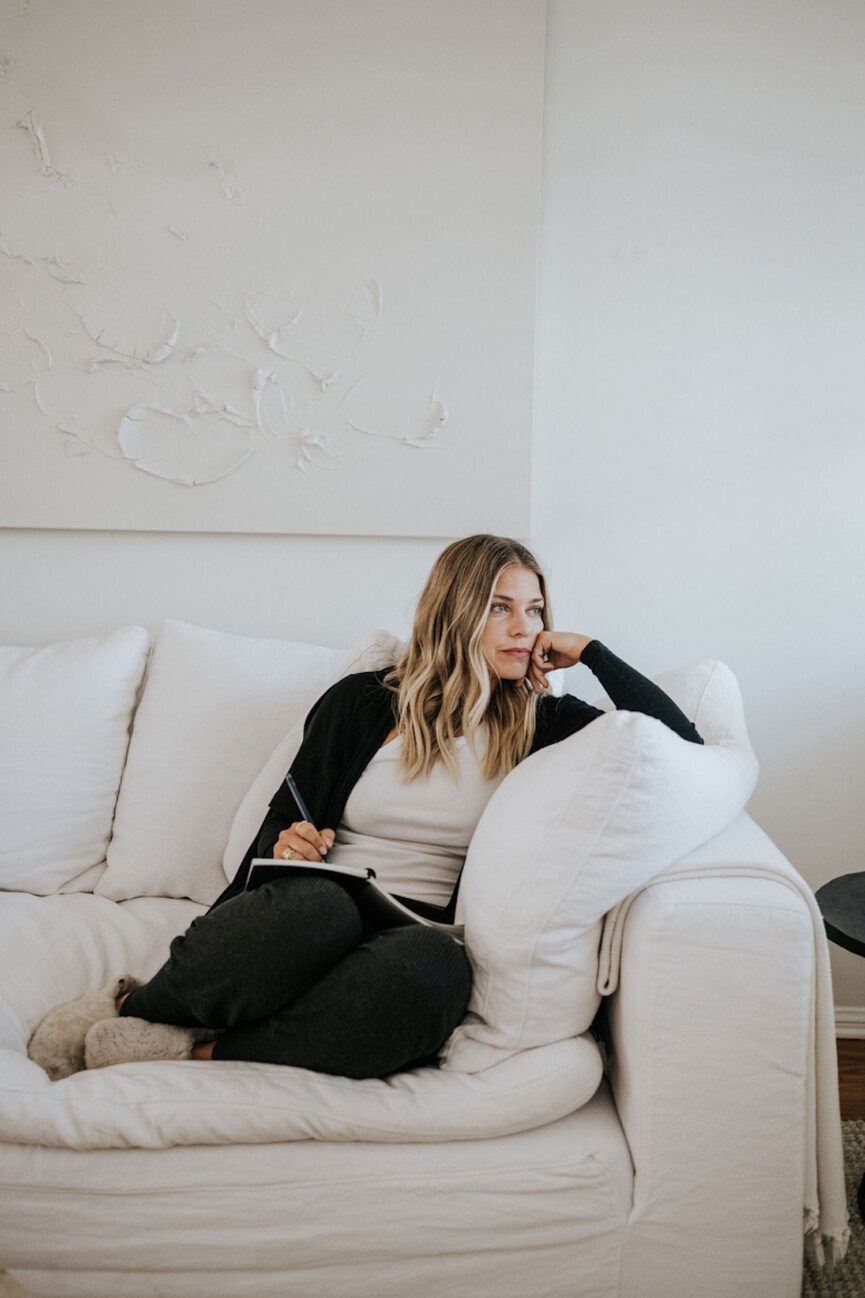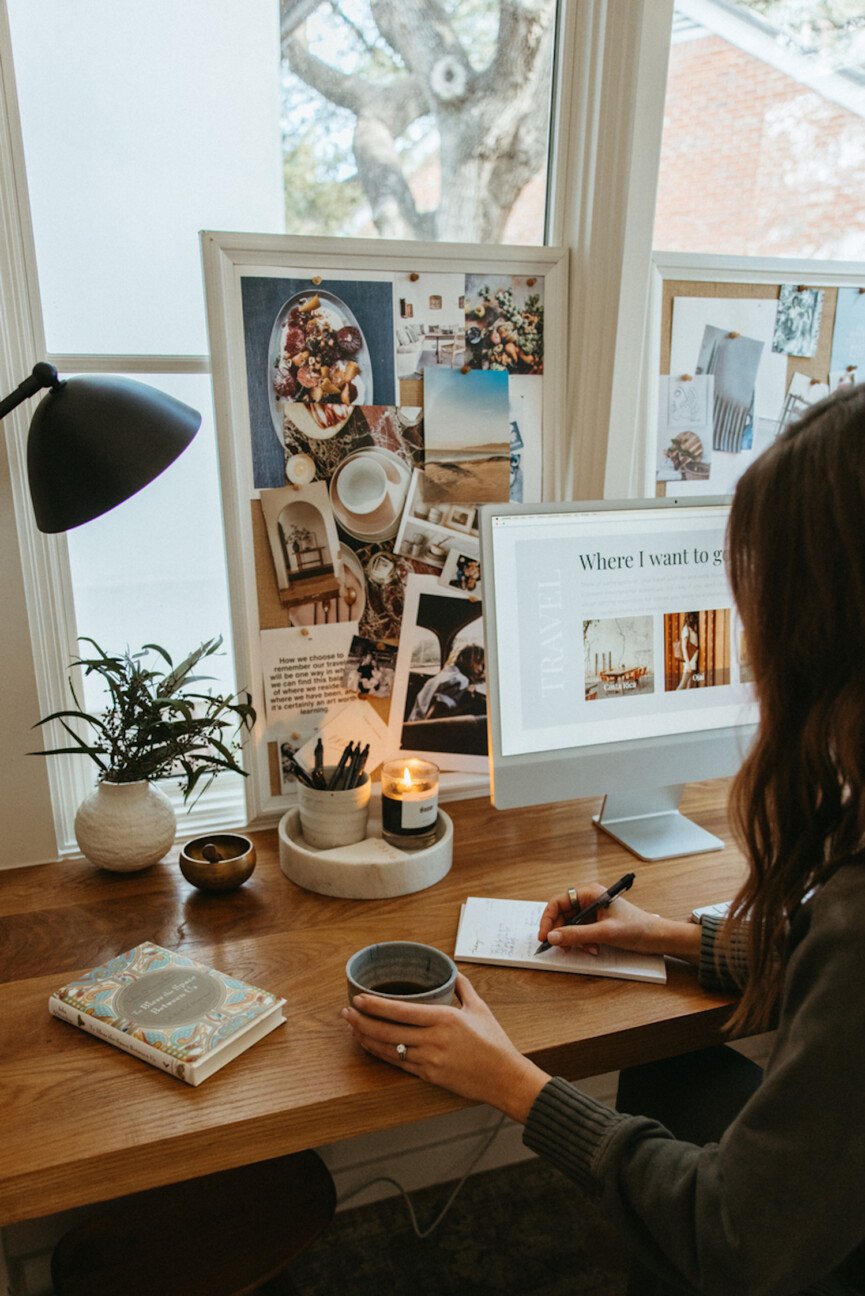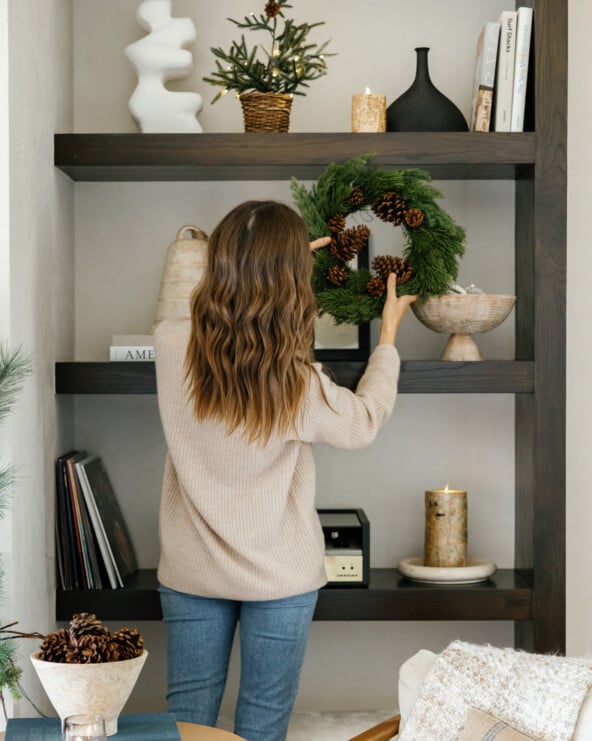Self-sabotage can be hard to notice. Harmful habits, whether on a small scale or manifesting to a larger, more frequent degree, always originate with a purpose. They may help us feel safe, stable, and secure in our choices and behaviors. But little by little (or sometimes, all at once), the drawbacks and toxic impact of unhealthy habits become impossible to ignore. And if they don’t, then take it from someone who’s been there: the people in your life will hold you accountable.
Here at Camille Styles, we believe—and lean into—the power of habit. By cultivating rituals and supporting our lives with healthy routines, we’re more equipped to reach our goals. Our days are punctuated with practices that align with how we want to grow and see our lives unfold. But as with most anything in life, certain habits can make or break our wellness as a whole. After all, at its core, a habit is a deeply-ingrained tendency—and because we practice them subconsciously, unhealthy habits can be hard to give up.
Featured image from our interview with Sabeena Ladha.

The Importance of Cultivating Self-Awareness
When it comes to unhealthy habits to break, developing a strong sense of self-awareness can be a key step in positively shifting course. To ensure the practices we incorporate into our lives support us, we have to be adept at recognizing, understanding, and managing our emotions. Unhealthy habits may feel good in the immediate- or short-term, but the longer we rely on them as a vital element in our lives, the more they can hurt us in the long run.
To build healthy habits, we have to routinely check in with ourselves.
Self-awareness works to combat this. By checking in with ourselves consistently, we learn to question, re-evaluate, and realign our choices. The majority of us are guilty of undergoing—and continuously engaging in—behaviors that may have once been helpful. To build healthy habits though, routine pauses and reflections are essential. Is how I’m spending my time conducive to the life I want to experience today, tomorrow, and every day moving forward?

How to Build Greater Self-Awareness
But I get it: self-awareness, like many areas of emotional health, can feel nebulous. And many of us mistakenly believe that self-awareness is a character trait—instead of a practice we can cultivate all throughout our lives. No matter where you are in your self-awareness journey, the following tips can help you build and flex your self-awareness muscle.
Start with curiosity
Orienting ourselves toward curiosity is a powerful way to learn and expand. Never be afraid to ask why. Why am I feeling this? Why did this trigger me in this way? Why do I think this decision is better for me than the alternative? The more we question and explore, the more we ultimately learn and grow.
Get vulnerable
Self-awareness requires a release of judgment. As you’re identifying your own unhealthy habits to break, you may find that you’re quick to defend yourself—and make excuses for why you can’t or shouldn’t release these practices. But vulnerability is one of the first steps in making positive change. It can help us release our assumptions and step into the uncomfortable, but ultimately game-changing process of dismantling what doesn’t serve us—and building up the habits and behaviors that do.
Track and reflect on your feelings
In a journal, list out the key events of your day. Next to each event, jot done a few words or phrases that describe your feelings surrounding the event. Maybe you had a challenging conversation with a friend, or a work project didn’t materialize the way you’d intended. By identifying the definitive feelings associated with these moments, you’ll begin to notice your triggers. This opens up space for making positive adjustments where necessary.
Lean into empathy
We may think that self-awareness means that we’re always locked into our own experience and thoughts, but spending more time with others ensures our sense of self isn’t built in a vacuum. Mirroring—the act of subconsciously adopting others’ behaviors or expressions—is a powerful reminder of our innate humanness. The more we engage with others, the greater emotional empathy and empathic concern we can build.
Identify your core values
One of the most concrete ways you can identify the unhealthy habits to break in your life is by listing your core values. Definitions abound, but the most basic understanding of our core values is the unwavering beliefs that guide our actions and choices. In her book, The Upside of Stress, health psychologist and Stanford professor, Kelly McGonigal stresses the importance of core values: ” […] writing about personal values makes people feel more powerful, in control, proud, and strong. It also makes them feel more loving, connected, and empathetic toward others.”
Take time to jot down your core values. For example, mine are Compassion, Creativity, and Community. (I like to call them the “3 C’s.”) What feels undeniably, inextricable true to you? What truths about how you see the world would you protect at any cost? Your responses to these questions can help guide you to your core values.

5 Unhealthy Habits to Break
Now that we’ve laid the groundwork for self-awareness, it’s time to put that emotional intelligence to the test. Inevitably, we all have different unhealthy habits to break. But ahead are some of the most common culprits keeping us from experiencing optimal well-being—and exactly how to break the cycle.
Running on Empty (In Every Sense)
We live in a culture of glorified depletion. Everything from sleep to proper nutrition to self-care can seem like a ‘nice-to-have’ when productivity and performance are on the line. But more and more, the conversation is shifting to highlight the importance of pouring into ourselves—and how ensuring our needs are met helps us show up as our best selves.
Break the habit: Reflect on the areas of your life where you could use a little more love. Do you consistently get eight hours of solid sleep—or are you forgoing those precious zzz’s for late night working sessions? Are you sitting down to three vibrant, mindful meals that truly nourish you—or are you shoveling down a sad salad at lunch while furiously typing away? While the idea of balance remains a forever-elusive concept (and one that we’ll perpetually come in and out of all our lives), filling our metaphorical cups first allows us to pour into everything we find meaningful and joyous in life.
Following Wellness Trends That Don’t Serve You
We get it: wellness trends abound. And the line between what’s helpful and what’s harmful can be hard to draw. Before fully committing to any wellness trend, it’s importance to first consider bio-individuality. The functional medicine concept asserts that everyone’s health needs are different, and what’s best for one person may not suit someone else. While one friend may be proselytizing about how going dairy-free changed her life, you might have no problem digesting lactose—and your gut loves the probiotic-rich protein yogurt delivers. A wellness influencer might wax poetic about her favorite HIIT workout, but low-impact movement keeps your body feeling its best.
Break the habit: This is where curiosity comes into play. The next time you see a wellness trend you’re interested in trying, take a beat. Why does this resonate? Am I attracted to its quick-fix solution or the fact that it’s a buzzy, novel concept? You can also apply this to any current wellness practice you have in your arsenal. Does my workout routine energize and align my body, or am I left feeling depleted every time I step out of the studio? Is journaling before bed helpful, or would I feel more connected to my mind by doing a PM meditation?
The beauty of being critical of health trends is that you get to create a fully-customized, ever-evolving wellness plan. One that does—and should—look different from everyone else’s.

Procrastinating What’s Important
I’ve been open about my past as a chronic procrastinator—often putting off important personal or professional tasks because they felt uncomfortable, too new, or I didn’t know where to begin. Despite, of course, the obvious negative consequences of leaving something until the last minute. Procrastination as a phenomenon exists for several reasons, but one key factor is present bias.
Present bias is the idea that we’re more motivated by immediate gratification than long-term results. Think back to the last thing you procrastinated on. It likely felt good to put off a task whose rewards you wouldn’t experience for some indeterminate length of time. And instead, you swapped in something that delivered a positive experience in the short-term. (Hi, checking social media instead of checking off that multi-step work project.)
Break the habit: Even if you’ve experienced the negative consequences of procrastination yourself, it’s still difficult to disrupt the cycle. My best advice? Take it little by little, breaking down the larger task into small, manageable steps. Start with a to-do list, sectioning out the process of start to finish into tiny tasks you can quickly check off. Doing so builds motivation, tapping into the dopamine receptors that thrive on completion.
You can also combat procrastination by being proactive about your distractions. Block or delete any social media apps you typically open when a task feels tough. Change up your environment and work from somewhere that supports your productivity. When I’m noticing procrastination creep up, I step out of my home office and work from a coffee shop. Just the buzz of others around me is enough to inspire a few hours of solid work.

Relying on Quick Dopamine Hits
There’s a reason everyone’s been doing a dopamine detox. While the label is a bit of a misnomer—dopamine is something naturally produced in the body, and as such, you can’t completely detox from it—the idea behind the concept is sound. With overstimulation and instant gratification available to us at every turn, it’s easy to punctuate our days with behaviors and habits that deliver exactly (re: only) that. Examples abound: social media scrolling, online shopping, ultra-processed foods, etc. As far as unhealthy habits to break go, this is likely one we can all focus on. The good news? Though a reliance on dopamine hits is common, there are plenty of alternatives to connect with that deliver sustainable, long-term joy.
Break the habit: While a dopamine detox can sound intimidating, replacing high-dopamine behaviors with low-stimulus activities makes it easier to resist these habits you engage in subconsciously. Brainstorm activities you’d like to create more space for: low-impact exercise, reading, time outdoors, meditation, journaling, creative hobbies—the list is long. Trust me: the more time you dedicate to whatever these activities look like for you, the easier it becomes to resist the black hole that is your phone.
Starting With Self-Doubt
In many ways, doubt is the ultimate form of self-sabotage. How many times have you taken on a new challenge only to immediately question whether or not you can see it through? Instead, practice the art of trusting yourself to rise to the occasion. After all, practicing an abundance mindset is more than half the battle when it comes to tapping into your inner strength and reaping the benefits.
Break the habit: Make the active choice to switch from fear-based thinking to abundance. In a previous interview, Amina AlTai, a career and leadership coach, shared that “When we’re in fear-based thinking we often approach situations from a place of scarcity. Our first thought is usually that there isn’t enough. So, if we believe that there isn’t enough, it will be reinforced externally.”
Let’s play that back: your thoughts create your reality. Full stop. When we plant that seed of positivity and an openness to what comes, we subconsciously reinforce those beliefs through our experiences and actions. Good begets good. Concretely, practicing positive affirmations can be a powerful way to incorporate this thinking into your everyday life. Start with these positive affirmations for women and select the sayings that resonate most. Write those on a sticky note posted to your bathroom mirror and say them to yourself each morning. Sure, it might feel strange at first, but the more you practice these positive sayings, the more you invite them into your life. That’s the power of cultivating healthy habits.
More ways to take your healthy habits to the next level:
50 Simple Daily Habits That Will Make You Happier and Healthier
Small tweaks, major difference.
My Ultimate Wellness Playbook: 20 Daily Habits That Keep Me High-Vibe and Energized
Cozy, calm, and collected.
How to Get Back Into a Routine—5 Steps to Reignite Your Healthiest Habits
Progress, not perfection.









